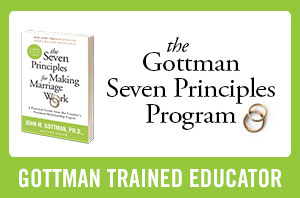Four Changes You Can Make To Have More Productive Conversations
Have you ever had a conversation with a significant other, a co-worker or a relative and thought “well, that could have gone better…” I know I have! It’s hard bringing up issues with people; maybe that’s why so many of us keep our feelings to ourselves and do not share them with others.
Based on John Gottman’s 40 years of research with couples, here are 4 changes you can make so that your conversations do not turn into arguments or feelings of ill-will.
Change #1
Before even starting the conversation, think to yourself: “What is the specific behavior I want to see changed?” When you start to think about the issue this way, you are already changing what might come off as a criticism into a complaint. Complaints are about specific issues, not about a person’s character.
Change #2
Erase the phrase “I feel like…..” from your vocabulary. What usually comes after this phrase? The word YOU. As soon as you add the word “like” you are describing the other person. Your intentions may have been to describe your own feelings, but you are actually criticizing the other person instead.
Instead use the phrase “I feel/felt ______ (identify a feeling) when you do/did ______ (specific behavior).
By actually stating how you feel, you are more likely to elicit an apology. And let’s be honest, isn’t that what you want?
Change #3
Add the phrase “I see your point” to your vocabulary. If the other person starts to get defensive or critical, it’s very easy to get defensive back–almost too easy! Instead try to pick out small parts from what they are saying that you can understand. Saying “I see your point” goes a LONG way when someone is being critical or defensive and can almost instantly decrease the tension in a conversation.
Change #4
Never roll your eyes or smirk when having a conversation. These are both signs of contempt and tell the other person that you do not respect or value what they are saying. Although they might not create a blow-up mid conversation, over time these behaviors will chip away at your relationship with that person. These behaviors might be automatic responses for you depending on the person with whom you are talking, so be mindful of when you do them.
And there you have it! Try some of these out and see if your conversations turn out much better than you expected!















